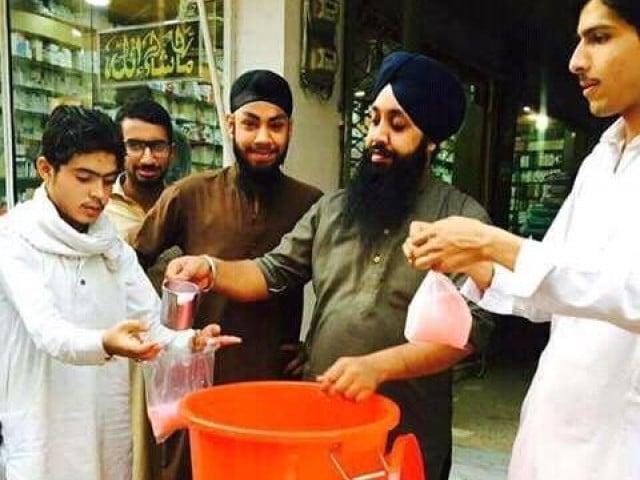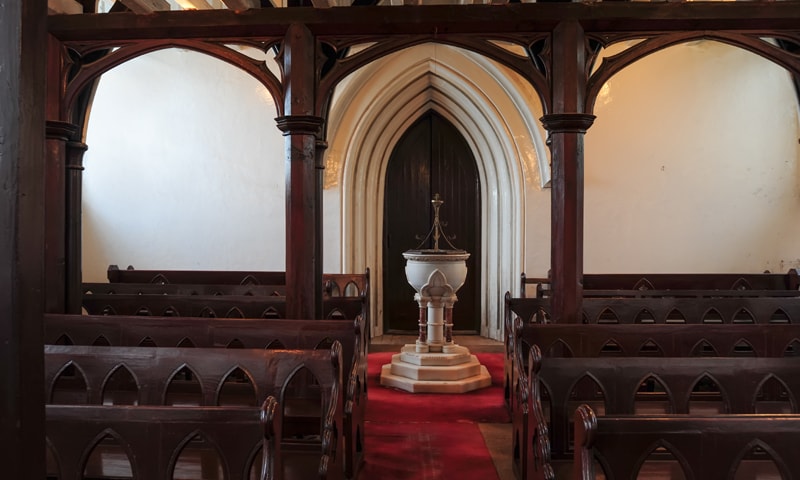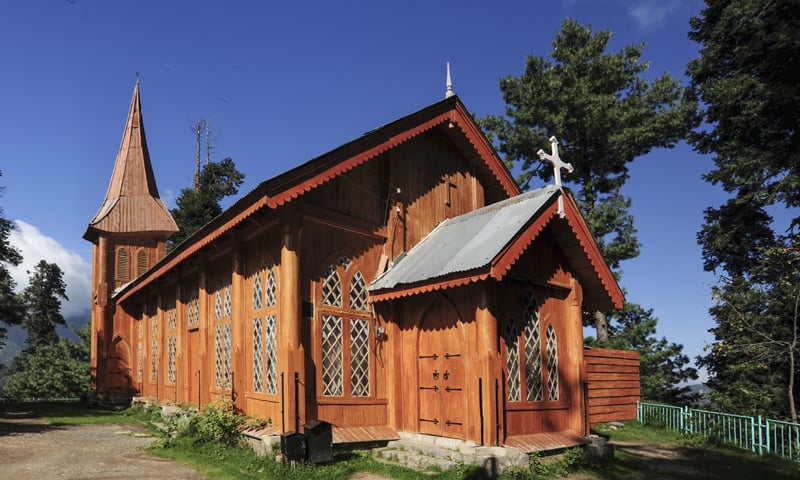HERITAGE: GOD IN THE MOUNTAINS
St Luke’s Church in Abbotabad
As one reaches the nearly 9,000-ft mountaintop called Thandiani, near Abbottabad, there comes in view a little stone and wood building in need of urgent repair. A small wooden plate erected in the grass not far from its gates identifies it as Saint Xavier Church, Diocese of Peshawar, Church of Pakistan.
St Xavier’s Church was built somewhere towards the end of the 19th or early 20th century by the British civil and military officers during their stay in what was then called the British or Indian Northwest Frontier. In keeping with their missionary zeal, a small two-room dispensary was built some 100 yards to the right of this Anglican place of worship. The clinic still gets a visiting doctor on some weekends from the Bach Christian Hospital at Qalandarabad, midway between Abbottabad and Mansehra.
The church at Thandiani is a picture of neglect. Locals selling tea, food and groceries in the few shops clustered around the church do not remember when a service of any nature was last held inside its penurious hall. As one peeps through its broken glass windows, a time-worn rug can be seen spread on the potholed floor. Its wooden pews look rickety. It does not even have a lectern. Underneath its tin-covered sloping roof, there is little on the bland walls except a curtain with some words of universal wisdom on it. And yet some tourists seem to have made blatant attempts at knocking one of its windows off its hinges out of mere curiosity, leaving the job half finished out of frustration.
There are a number of awe-inspiring churches hidden away in the mountains upcountry
For some years, two elderly nuns also acting as compounders, resided in the dispensary during their summer sojourns on the mountaintop, but not anymore. One of them is reported to have died while the other is said to have departed for her country of origin. These days its broken windowpanes tell a tale of poor living conditions and an acute lack of sanitation.
The Holy Trinity Church in Murree
The serene hill station of Thandiani has transformed during the last three decades into a dirty little bazaar, thronged mostly by domestic tourists from Punjab and Khyber Pakhtunkhwa. These tourists, finding little of what they revel in at the Mall in Murree, find the place quite below their expectations. Water on the mountaintop is scarce if not altogether nonexistent, which together with the unavailability of proper hotels, drives most visitors away. They loiter on this narrow mountain strip for an hour or two and after feasting on
pakoras fried on kerosene stoves, depart for the more happening places in the region.
The highest altitude point in the Himalayas, Thandiani is not a place for revellers. Unaccustomed to the heat of the plains, the British civil and military administrators serving in this part of India developed Thandiani as a summer retreat for themselves and their families. Before the present road was built, British officers would transport their families to the mountaintop in palanquins. The tall conifers found in such abundance on the mountaintops in the Himalayas including Thandiani, Nathiagali, Dungagali, Ayubia and Murree were all planted during the times of the British. These trees constitute our most prized heritage.
All these quaint churches would have attracted foreign tourists only if our tourism policies had been a little more imaginative in preserving and creating them as tourist attractions.
Similarly, until quite recently most of the land on the mountaintops, in what was earlier known as the Frontier, was in the ownership of the Diocese of Peshawar. Perhaps the same was true in the case of Murree which has the highest number of churches built along the perimeters of the Mall. By the look of things, it appears that in future the Diocese of Peshawar would be left in charge of only about half a dozen churches at Thandiani, Nathiagali, Dungagali and Ayubia as private landowners have seized a major chunk of the prized land.
interior view of The Holy Trinity Church, Murree
The church at Nathiagali is by all estimates the most photographed place of worship in the mountains. With its wooden structure, perennially painted in black with its towering spire, it offers a panoramic view and numerous photo-points to the tourists looking for recreation near it. There is a small rectory behind the main hall that presently serves as a lodging unit for its forlorn-looking watchman. The good-natured watchman normally lets the tourists enter the church. Most of these churches and particularly those at Dungagali, Ayubia and Murree were built in the Gothic style of architecture.
Some four kilometres to the east of Nathiagali, the wood and stone church at Dungagali stands next to the Mukshpuri Hotel. The main building of the hotel built in 1880 was reduced to ashes in a blaze some four months ago. The proximity of the church to the hotel is of significance since the hotel with its famed dancing hall served as the central point of congregation for the English officers in the old days. The church narrowly survived the high rising flames of the blaze which was put down after great effort but not before it had devoured an invaluable piece of heritage.
Relatively hidden from public view, the church at Ayubia is nestled among one of the most beautiful spots. The location is nevertheless quite well-known to the domestic tourists of the Christian faith who use its expansive lawns for picnics -- and leave it littered afterwards. With its purpose-built rectory, a couple of lodging units, an old-fashioned staircase made from iron that takes one up to an attic, and even an old piano, the grand old church at Ayubia must have served as a complete administrative set-up during its heyday.
St Mathew’s Church in Nathiagali
It takes little imagination to transport oneself to past when the echo of psalms and hymns recited in Latin would rise from the grand stone building of the church in Ayubia. Ironically, the present generation of Christians use the precincts of the church more as an advantageous place for tourism and picnicking.
All these quaint churches would have attracted foreign tourists only if our tourism policies had been a little more imaginative in preserving and creating them as tourist attractions. Till such imagination creeps into our effete system of bureaucracy, one can only hope that efforts would be made to conserve our irreplaceable heritage from further dilapidation.



















